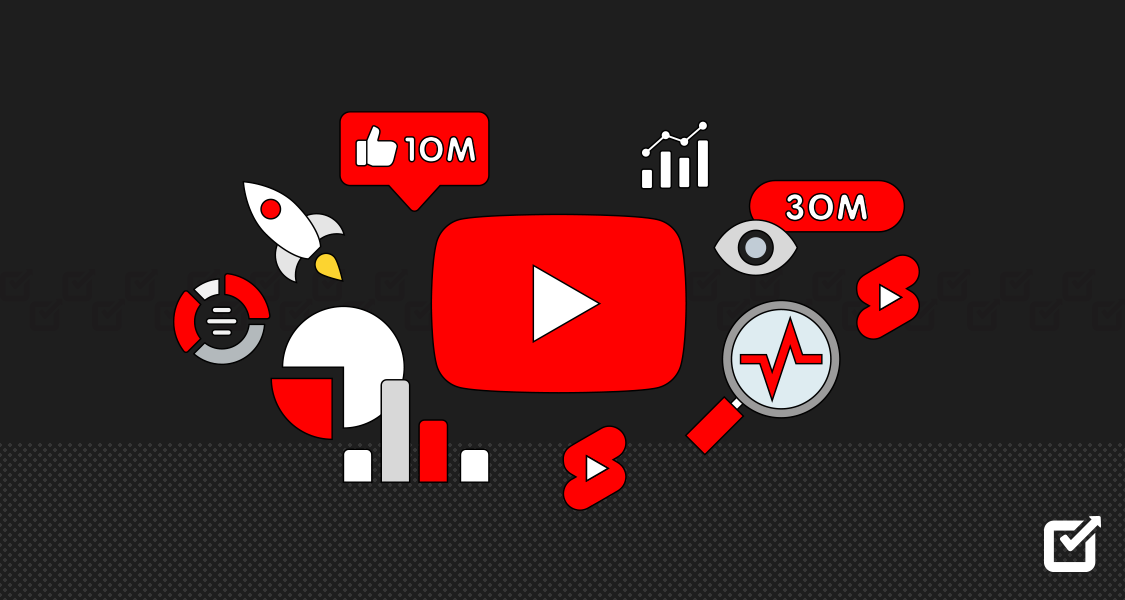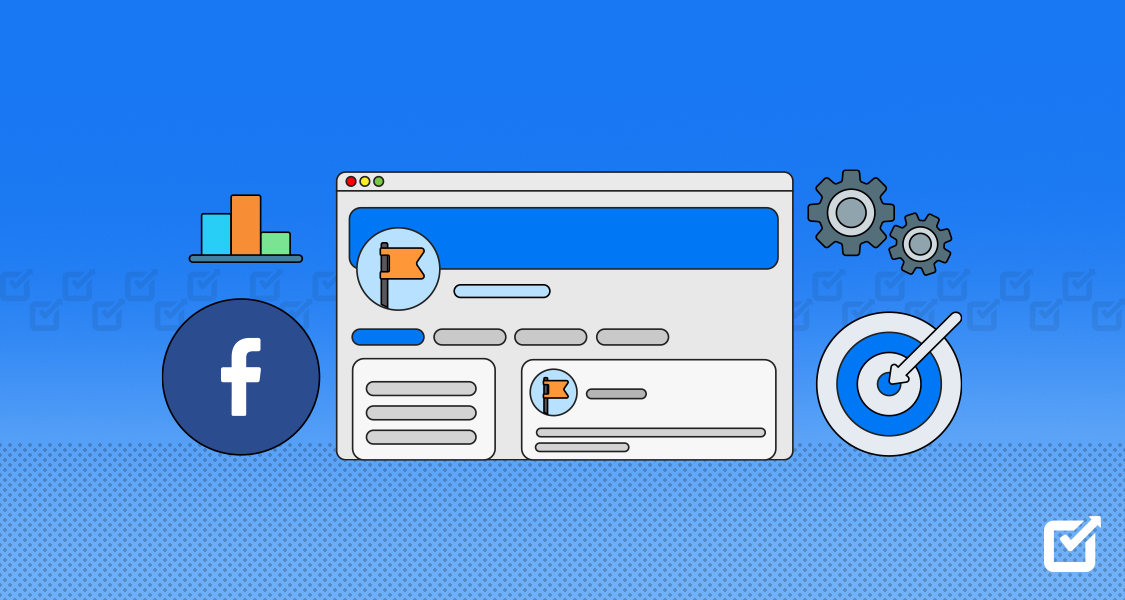Your brand reputation is everything. But with social media buzzing and online chatter constantly flowing, it can be tough to keep your finger on the pulse. That’s where brand monitoring comes in!
Brand monitoring is an approach that lets you hear every single conversation about your brand online. But why is it important?
Well, research shows that 83% of customers believe that they feel more loyal to brands that effectively manage their complaints online.
That means brand monitoring isn’t just about eavesdropping (although, let’s be honest, a little brand eavesdropping never hurt anyone). It’s about actively engaging with your audience, addressing concerns, and capitalizing on positive mentions.
Intrigued? Good! In this blog, we’ll be discussing brand monitoring in detail. But before we start, here’s a little tip: get yourself a social media management tool to engage the audience on all platforms from a single inbox!
What Is Brand Monitoring?
Brand monitoring is essential for businesses to manage their online reputation. It involves tracking various channels, such as social media, blogs, forums, news sites, and reviews, to understand public perception and sentiment about a brand.
Here’s a closer look at what brand monitoring involves and why it matters.
Monitor Your Brand With Social Champ!
Track mentions, analyze posts, and stay ahead of your competition. Start improving your brand presence now!
The Basics of Brand Monitoring
At its core, brand monitoring continuously tracks mentions, discussions, and sentiments related to your brand across the internet. This helps businesses see what people are saying about them, whether it’s positive, negative, or neutral. By gathering this information, companies can respond quickly to feedback, maintaining a positive image.
Types of Brand Monitoring
Let’s consider the type of brand monitoring:
- Social Media Listening: Social media platforms are active conversation hubs. Monitoring these channels lets brands see real-time mentions and discussions about their products or services.
- Media Coverage Tracking: Monitoring news articles, press releases, and media coverage helps brands understand their portrayal in the press. This can identify potential PR issues early and manage them effectively.
- Review Management: Customer reviews on platforms like Yelp, Google Reviews, and TripAdvisor can greatly influence public perception. Monitoring these reviews helps brands address customer concerns and highlight positive experiences.
- Competitor Analysis: Understanding what is being said about competitors can offer valuable insights into industry trends and market positioning. This information helps brands adjust their strategies to stay competitive.
- Sentiment Analysis: It’s important to know what is being said and how it’s being said. Sentiment analysis tools assess the tone of mentions (positive, negative, or neutral) to give a clearer picture of public opinion.
Related Article: 16 Best Social Media Monitoring Tools And Why You Must Explore Them
Why Is Brand Monitoring Important?
Brand monitoring is essential for maintaining and enhancing a business’s reputation and overall success. Here’s a closer look at why it matters.
Reputation Management
Protecting your brand’s reputation is crucial. Negative comments or misinformation can spread quickly, potentially causing significant harm. By monitoring your brand, you can identify and address these issues promptly.
This proactive approach helps maintain a positive image and builds trust with your audience. For instance, if a customer posts a negative review, you can respond quickly to resolve the issue, showing your commitment to customer satisfaction.
Customer Insights
Monitoring your brand provides valuable insights into customer opinions and preferences. Understanding what customers like or dislike about your products or services is key to improvement. These insights allow you to tailor your offerings to meet customer expectations better.
For example, if many customers praise a particular feature of your product, you might highlight it in your marketing efforts. Conversely, if there are recurring complaints, you know where to focus your improvement efforts.
Competitive Analysis
Keeping an eye on competitors is another important aspect of brand monitoring. By observing what others in your industry are doing well or poorly, you can identify both opportunities and threats.
This information can inform your own strategies, helping you stay competitive. For example, if a competitor receives positive feedback for a new feature they’ve implemented, you might consider adopting a similar approach. Conversely, noticing their mistakes can help you avoid similar pitfalls.
Crisis Management
Early detection of potential crises is key to reducing their impact. Brand monitoring allows you to respond quickly to emerging issues, minimizing damage to your brand. Whether it’s a sudden surge in negative reviews or a viral post that misrepresents your company, acting swiftly can prevent minor issues from turning into major PR disasters.
For example, if a misleading article about your product starts gaining traction, you can address it immediately, providing correct information and clarifying any misunderstandings.
10 Steps to Implement a Perfect Brand Monitoring Strategy
Brand monitoring can greatly impact your business by providing valuable insights and helping you manage your reputation. Here’s a simple guide to get started:
Define Your Objectives
Clearly outline what you want to achieve with your brand monitoring efforts. Having clear goals will guide your strategy and help you measure success. Are you focused on improving customer satisfaction, managing your brand’s reputation, or gaining competitive insights?
For example, if your main goal is to enhance customer satisfaction, you might focus on tracking customer reviews and feedback. If reputation management is your priority, pay close attention to negative comments and misinformation.
Identify Key Metrics
Determine which metrics are most important for your objectives. These could include sentiment analysis, share of voice, and engagement rates. Sentiment analysis helps you understand the tone of conversations about your brand—whether positive, negative, or neutral.
Share of voice measures how much of the market conversation involves your brand compared to competitors. Engagement rates track how actively people interact with your content, like likes, shares, and comments.
Choose Monitoring Tools
Select tools that align with your needs and budget. Consider factors like ease of use, integration with your existing systems, and customer support. Popular tools include Social Champ for social media monitoring, Google Alerts for web mentions, and Brandwatch for comprehensive monitoring across various channels. Make sure the tool you choose fits your specific needs, whether it’s real-time alerts, detailed analytics, or user-friendly dashboards.
Set Up Alerts
Configure alerts for critical mentions and keywords related to your brand. This ensures you’re notified of important developments in real-time. For instance, set up alerts for your brand name, product names, key executives, and common misspellings.
Immediate notifications allow you to respond quickly to both positive and negative mentions, keeping a proactive approach to reputation management.
Monitor Social Media
Actively track social media platforms where your audience is most active. This includes major networks like Twitter, Facebook, Instagram, LinkedIn, and niche forums or communities relevant to your industry.
Each platform has its own dynamics and user behavior, so understanding where your audience spends their time is crucial. Engage with users by responding to comments, answering questions, and addressing concerns.
Regularly analyzing social media interactions can provide valuable insights into public perception and emerging trends.
Track Review Sites
Keep an eye on review sites like Yelp, TripAdvisor, and industry-specific platforms. Reviews on these sites can provide valuable insights into customer satisfaction and areas for improvement.
Regularly checking these platforms allows you to spot and address recurring issues quickly. Positive reviews can be highlighted in your marketing efforts, while negative ones can offer constructive criticism to help you enhance your offerings.
Analyze Competitor Mentions
Monitoring competitors can give you a competitive edge by highlighting their strengths and weaknesses. By understanding what customers appreciate or criticize about your competitors, you can identify opportunities to improve your own products or services.
Additionally, analyzing competitor mentions can reveal gaps in the market that your brand can fill, helping you stay ahead of the competition.
Engage With Your Audience
Respond to mentions, comments, and reviews. Engaging in conversations shows that you value customer feedback and are willing to act on it. This interaction builds stronger relationships with your audience and builds loyalty.
Whether thanking customers for positive reviews or addressing concerns in negative ones, active engagement demonstrates your commitment to customer satisfaction.
Analyze Data Regularly
Regularly review and analyze the collected data to identify trends, patterns, and insights. This ongoing analysis helps you understand how public perception of your brand is evolving over time.
Use this information to refine your strategies. For example, if you notice a spike in negative sentiment around a specific product feature, you can investigate and address the issue promptly.
Adjust and Improve
Brand monitoring is an ongoing process. Continuously tweak your strategy based on the insights you gather to ensure it remains effective. As market conditions, customer preferences, and industry trends change, so should your brand monitoring tactics.
Regularly updating your approach ensures that it stays relevant and continues to provide valuable insights.
Featured Article: Social Media Metrics That Don’t Matter at All and What to Track Instead
5 Brand Monitoring Tools for 2025
Brand monitoring tools are essential for keeping track of online conversations about your brand. Here are five tools that can help you stay on top of your brand’s reputation in 2024:
Social Champ

Social Champ Social Champ is a comprehensive social media management tool that supports brand monitoring. Its Social Listening feature (available in beta) allows you to track mentions and keywords across various platforms, providing valuable insights into how people feel about your brand and how engaged they are.
Additionally, Social Champ’s analytics tools give you detailed reports on metrics like engagement, reach, and sentiment, helping you make informed decisions. The platform also integrates with various social media channels, allowing you to manage all your accounts from one place.
This integration means you can monitor popular platforms like Facebook and Twitter and niche forums where your audience might be active.
Hootsuite

Hootsuite Hootsuite offers strong social media monitoring capabilities, including real-time tracking of mentions, keywords, and hashtag performance. This tool integrates with multiple social media platforms, making it easy to manage all your accounts from one place.
Hootsuite’s analytics dashboard provides detailed reports on engagement, reach, and audience demographics. Its scheduling feature ensures you can plan and publish content at optimal times, while the monitoring tools help you quickly respond to customer feedback and emerging trends.
Brandwatch

Brandwatch Brandwatch provides deep insights into online conversations about your brand. It uses powerful analytics to identify trends and sentiments. Brandwatch’s advanced data visualization tools make it easy to understand complex data and derive actionable insights.
The platform also offers competitor analysis, allowing you to see how your brand stacks up against others in your industry. With its AI-driven sentiment analysis, Brandwatch can uncover the emotional tone behind mentions, helping you understand public perception more clearly.
Google Alerts

Google Alerts Google Alerts is a free brand monitoring tool that notifies you whenever your chosen keywords are mentioned online. It’s a simple yet effective way to monitor your brand without investing in more complex software.
You can set up alerts for your brand name, product name, competitors, and industry-related terms.
You receive an email notification whenever these keywords appear in news articles, blogs, or web pages. While it lacks the in-depth analytics of more advanced tools, Google Alerts is a great starting point for basic brand monitoring.
Mention

Mention Mention is the best brand monitoring tool that monitors social media, blogs, news sites, and forums. It offers real-time alerts and in-depth analytics to help you manage your brand reputation. Mention allows you to track discussions in multiple languages and regions, giving you a global view of your brand’s presence.
The platform’s analytics features give you detailed insights into sentiment, reach, and engagement metrics. Additionally, its collaboration tools enable teams to work together on monitoring and responding to brand mentions efficiently.
Conclusion
Brand monitoring is important for any business looking to keep a good reputation and stay ahead in the market. By tracking what people say about your brand online, you can learn how customers feel, find ways to improve, and respond quickly to both praises and complaints.
By following this complete guide, you can set up a strong brand monitoring system that not only helps manage your reputation but also provides the needed insights for growth.
Consistent monitoring and active engagement will help you stay connected with your audience, quickly address issues, and strengthen your brand’s presence in the market.















